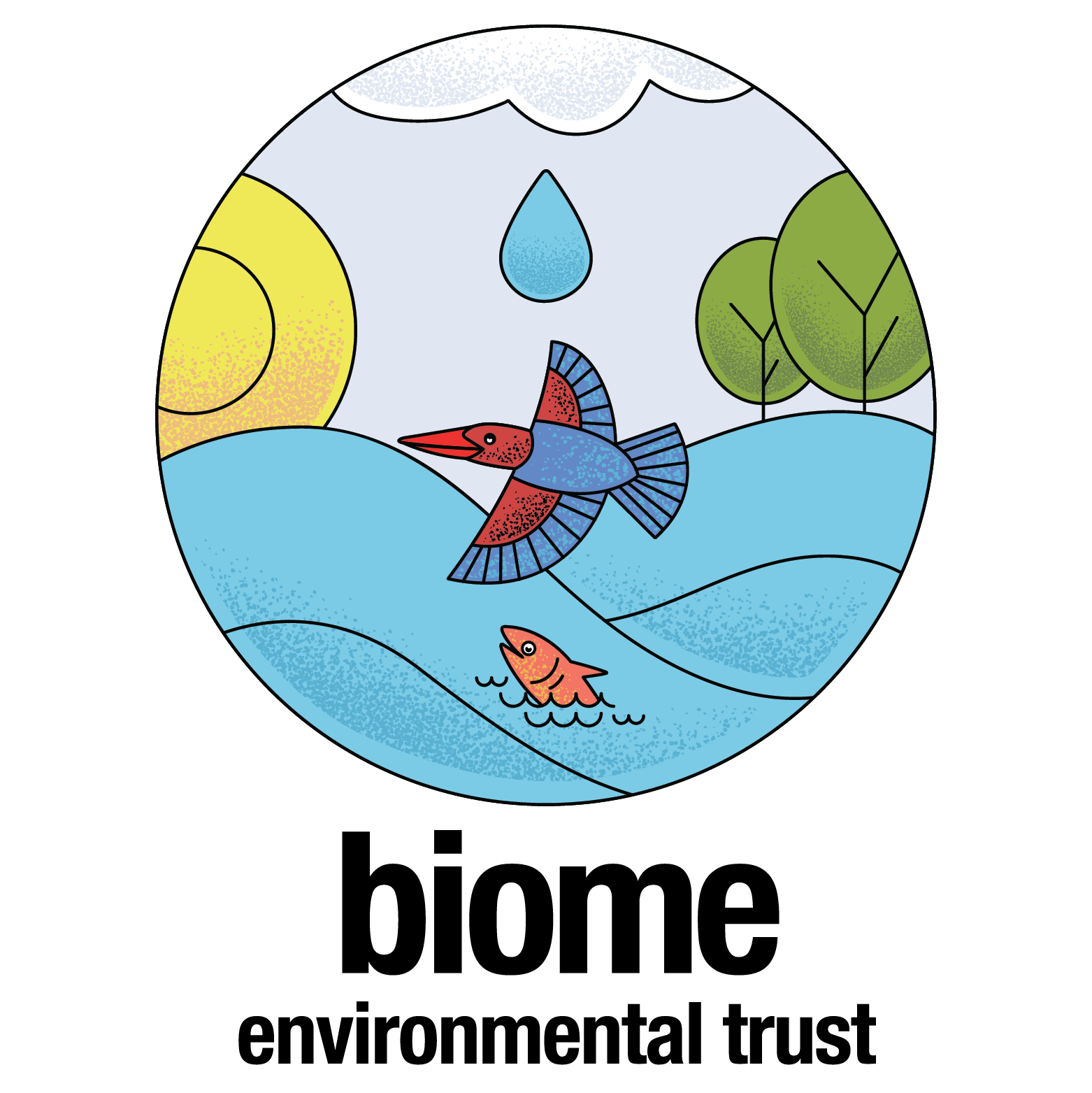Authored by Shreyas Sati and Alana Helin as part of the BIOME Trust Wetlands & Lakes Project
Byrasandra Lake is on 10.2 acres and is located in the south of Bangalore near the NIMHANS hospital. The lake lies within the Puttenahalli Lake series within the Koramangala-Challaghatta Valley. It is frequented by local residents who enjoy the provided walking path and gym, though laying of pavers is still in progress. No STP exists in this lake, however a well-demarcated area of wetland exists to the west of the lake. There are two inlets, one into the wetland area and the other into the main lake from the wetland through a weir under a bridge. The inlet predominantly carries stormwater, but there have been many cases when the sewage lines clog, resulting in the backflow of sewage which enters into the storm drains and finally flows into the wetland area. The volume of inflow through the inlets could not be determined.
Map 1
Overview and Observations
Byrasandra Lake is located in Jayanagar, Bangalore. Dr PU Antony, Professor of Zoology at Christ University and the founder/mentor of Green Army, has been declared as the warden of Byrasandra Lake by the KLCDA.
|
Lake Area
|
10.2 acres
|
|
STP & Wetlands
|
No STP exists in the lake premises, however a 0.6 acre natural wetland exists to the western side of the lake and there have been some discussions regarding the construction of an STP in the future.
|
There are many activities in the lake premises that are being funded by the BBMP and have been undertaken by their contractors. The work which has been undertaken within the past 8 months includes: fencing, cemented walls near residential colonies, paving, cleaning/deweeding, diversion of inlets to a single line leading towards Agara, construction of gym, and tree planting. There are 2 inlet points. One inlet enters into the wetland from an approximately 30 acre catchment area which includes: the NIMHANS region, Gulbarga Colony, and Tilak Nagar. It was reported by the security of the lake, Mr. Yellappa, that the rainwater enters the lake only during a flood event when the storm drains fill completely. The second inlet is the inlet into the main lake from the wetland region. It was also reported that sewage enters the wetland as a result of backflow when the sewage line clogs during a flood event.
In the mornings and evenings, local residents use the 0.8 km path around the lake for walking, jogging, or other workouts.
The Lake
Two inlets where water would enter Byrasandra Lake were identified and are summarized below.
|
Inlet
|
Name
|
Description
|
Photos
|
|
|
1
|
Wetland Inlet
|
Stormwater and sometimes sewage (during flood events) flows into the wetland from NIMHANS region, Gulbarga colony, Tilak Nagar etc.
|
|
|
|
2
|
Lake Inlet
|
The outlet of the wetland is the inlet to the main lake and flows through a weir under a bridge.
|
|
|
The outlet from the lake is an overflow system under a bridge in the NE corner of the lake.
Overflow outlet from Byrasandra Lake
There was minimal buildup of algae on the water surface. In the center of the lake, the depth may reach 9-10 feet.
Along the walking path, there is a gym near the gate and a filled kalyani along the western edge of the lake (see Map 1 for locations).
The STP
At present, no STP exists at Byrasandra Lake. However, there have been discussions with the government authorities to build an STP. The nearby university was approached by Mr. Mallikarjuna who asked them for help in funding the STP if possible. These discussions are in early stages and so there is very little information available regarding the STP.
The Wetland
There is a 0.6 acre, 2 foot deep natural wetland at Byrasandra in the west side of the lake which accounts for about 6% of the total lake area. The wetland is separated from the main lake by a bund/walking path, though there is a bridge under which water will flow from the wetland into the lake.
The wetland also has a large number of wetland plants throughout, though they did not cover the entire area.
Wetland pictured above
We were told by the security that the wetland is regularly maintained by either trimming the vegetation growth or removing some species of the vegetation growth. At this time, we are uncertain of the effectiveness of vegetation removal as a method of wetland maintenance as it may impact its capacity for nutrient removal.
Contact Info
Byrasandra Security : Yellappa : 0 85499 76146
BBMP Incharge : Usha Rani : 98860-46498
Green Army : greenarmy@christuniversity.in
Dr P U Antony, Initiator, Green Army : 91 80 4012 9319
Dr P U Antony, Initiator, Green Army : 91 80 4012 9319
References

